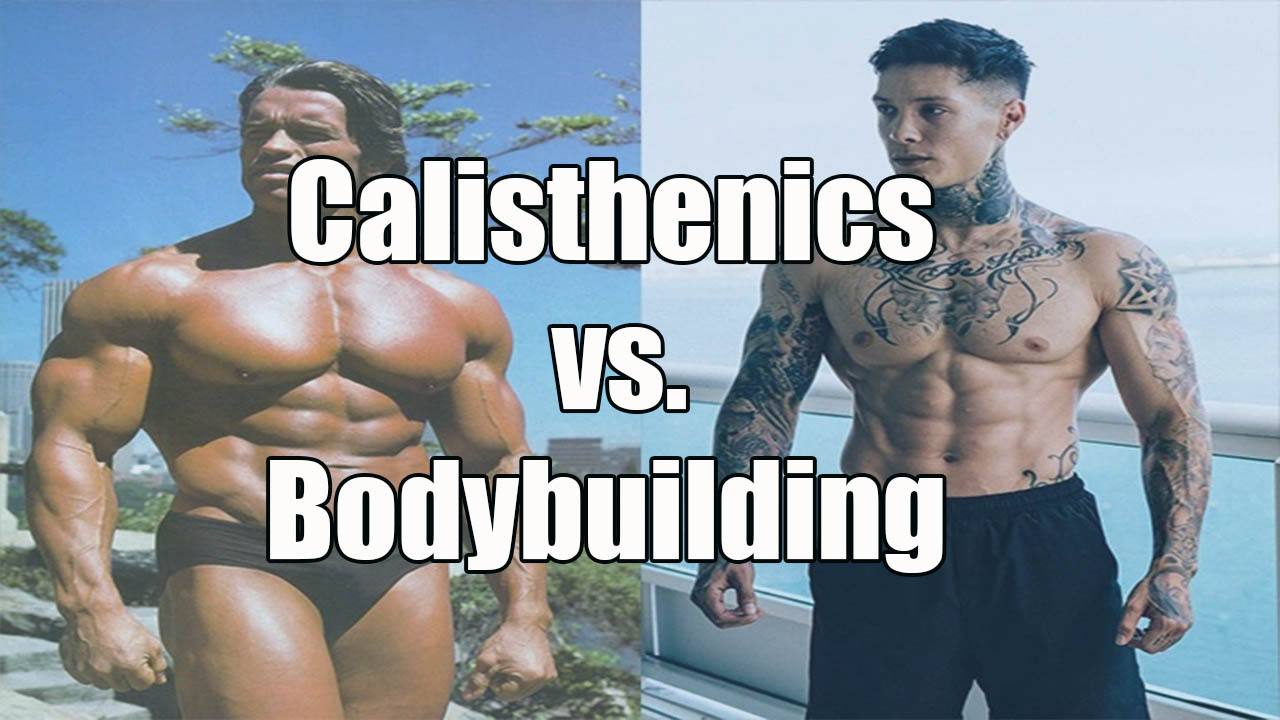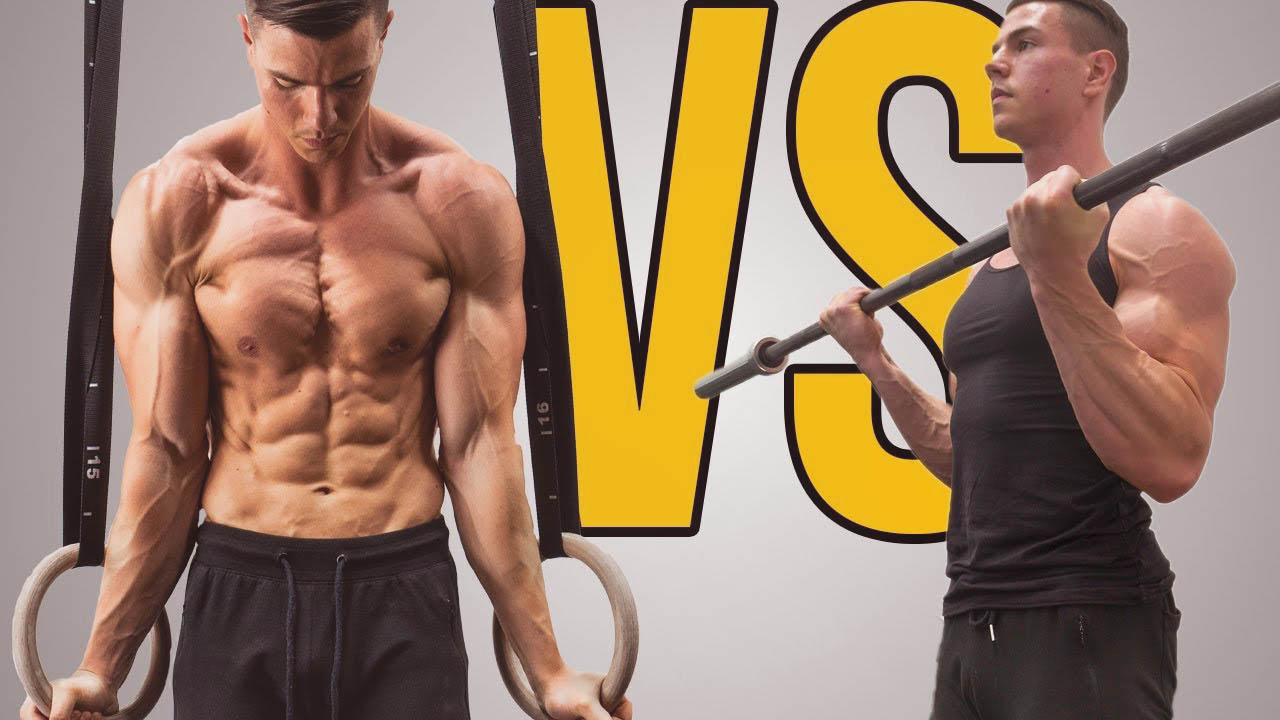When it comes to achieving optimal physical fitness, two popular methodologies stand out: calisthenics and bodybuilding. Both approaches offer unique benefits and cater to different fitness goals. Calisthenics emphasizes bodyweight exercises that enhance functional strength and flexibility, while bodybuilding centers around muscle hypertrophy and aesthetic development. This article aims to provide an in-depth comparison between these two fitness regimens, helping you decide which path to pursue.

What is Calisthenics?
Calisthenics is a fitness discipline that revolves around bodyweight exercises to enhance strength, endurance, and flexibility. Derived from the Greek words “kallos” (beauty) and “stenos” (strength), calisthenics focuses on using one’s body weight as resistance to develop a well-rounded level of fitness.
Bodyweight Mastery: The Core of Calisthenics
At the heart of calisthenics lies bodyweight mastery – the ability to manipulate one’s own body to perform various movements and exercises. From push-ups and pull-ups to squats and handstands, calisthenics challenges individuals to control and manipulate their bodies through space.
Functional Strength and Flexibility
Calisthenics strongly emphasizes functional strength, meaning the strength gained directly translates to real-world movements. This form of strength helps individuals perform everyday tasks more efficiently. Additionally, the dynamic nature of calisthenics fosters improved flexibility and range of motion.
Minimal Equipment, Maximum Results
One of the key appeals of calisthenics is its minimalistic approach to equipment. Many calisthenics exercises require nothing more than a pull-up bar, parallel bars, or a flat surface. This makes it an accessible and cost-effective option for individuals looking to get fit without the need for extensive gym equipment.
Emphasis on Body Control and Balance
Calisthenics demands a high degree of body control and balance, which is essential for performing advanced movements like handstands, planches, and muscle-ups. Practicing these exercises not only builds physical strength but also cultivates mental focus and stability.

What is Bodybuilding?
Bodybuilding is a structured fitness approach that aims to develop and sculpt muscles for aesthetic purposes. It involves intense resistance training to stimulate muscle growth and improve muscle definition, leading to a well-proportioned and visually impressive physique.
Hypertrophy: The Muscle Growth Objective
The primary objective of bodybuilding is muscle hypertrophy – the enlargement of muscle fibers. This is achieved through progressive resistance training, typically involving lifting weights, to induce muscle damage and subsequent repair, leading to muscle growth over time.
Targeted Muscle Isolation
Bodybuilding often involves targeted muscle isolation exercises, focusing on specific muscle groups to enhance their size and definition. This allows bodybuilders to address muscle imbalances and create a symmetrical physique.
Varied Training Modalities
Bodybuilding encompasses a wide range of training modalities, from free weights and machines to resistance bands and cables. This variety allows individuals to tailor their workouts to target specific muscles and achieve their desired aesthetic goals.
Nutrition: A Cornerstone of Bodybuilding Success
Nutrition plays a vital role in bodybuilding success. Bodybuilders meticulously plan their diets to optimize muscle growth, reduce body fat, and support recovery. Adequate protein intake, balanced macronutrients, and proper hydration are essential components of a bodybuilder’s nutrition regimen.
Comparing the Benefits of Calisthenics vs Bodybuilding
Calisthenics Advantages:
Enhancing Functional Fitness
Calisthenics’ focus on functional movements improves everyday physical abilities, such as lifting, pushing, and pulling, making it highly practical for real-life activities.
Improved Flexibility and Mobility
The dynamic nature of calisthenics enhances flexibility and mobility, reducing the risk of injuries and promoting overall joint health.
Convenience and Minimal Equipment
Calisthenics can be performed virtually anywhere, requiring minimal equipment and allowing individuals to easily maintain their fitness routine.
Full-Body Engagement
Calisthenics workouts engage multiple muscle groups simultaneously, promoting balanced muscular development and overall body strength.
Bodybuilding Advantages:
Muscle Hypertrophy and Aesthetics
Bodybuilding’s primary focus on muscle growth results in a well-defined and aesthetically pleasing physique that many enthusiasts aspire to achieve.
Enhanced Muscle Definition
Targeted muscle isolation and specific training techniques lead to enhanced muscle definition and a chiseled appearance.
Specialized Muscle Isolation
Bodybuilding enables individuals to address specific muscle groups and imbalances, creating a visually balanced and proportionate physique.
Comprehensive Nutrition Planning
The meticulous nutrition planning of bodybuilding supports muscle growth, fat loss, and overall health, ensuring the body has the necessary fuel for optimal performance.
Considerations for Choosing Your Fitness Path
Fitness Goals and Objectives:
- Calisthenics for Functional Fitness Enthusiasts
If your goal is to improve practical, real-world strength and enhance flexibility, calisthenics may be the ideal choice.
- Bodybuilding for Aesthetic and Muscle Growth Enthusiasts
If you aspire to sculpt a visually impressive physique with well-defined muscles, bodybuilding aligns with your objectives.
Available Time and Resources:
- Calisthenics: A Cost-Effective and Convenient Choice
Calisthenics requires minimal equipment and can be performed at home or in outdoor settings, making it a cost-effective and convenient option.
- Bodybuilding: Equipment and Gym Membership Considerations
Bodybuilding often involves gym access and specialized equipment, which may require a financial investment and regular access to a fitness facility.
Personal Preferences and Enjoyment:
- Bodyweight Mastery and Calisthenics Joy
If you enjoy the challenge of mastering bodyweight movements and find satisfaction in fluid, gymnastics-inspired exercises, calisthenics may resonate with you.
- Weightlifting and Muscle Building Satisfaction
If the process of lifting weights and witnessing progressive muscle growth satisfies you, bodybuilding might be your preferred path.
Injury Risk and Safety:
- Calisthenics’ Lower Impact and Reduced Injury Risk
Calisthenics’ focus on bodyweight exercises typically carries a lower risk of joint and muscle strain, making it a safer option for some individuals.
- Bodybuilding’s Focus on Proper Form and Controlled Progression
Bodybuilding emphasizes proper form and controlled progression, reducing the risk of injury during resistance training.
Finding Middle Ground: Hybrid Approaches:
Combining Calisthenics and Bodybuilding Principles Hybrid workouts that incorporate elements of both calisthenics and bodybuilding can provide a well-rounded fitness routine, combining functional strength, muscle growth, and aesthetics. Cross-Training for Optimal Results Cross-training between calisthenics and bodybuilding can prevent plateaus, enhance overall fitness, and offer a diverse and enjoyable workout experience.
Sample Hybrid Workouts
- Upper Body Strength: Combine calisthenics exercises like pull-ups and push-ups with traditional weightlifting movements like bench presses and dumbbell rows.
- Leg Day Hybrid: Alternate between bodyweight squats, lunges, and box jumps with weighted squats and leg presses.
- Core and Balance Fusion: Blend calisthenics core exercises like planks and leg raises with cable crunches and Russian twists using weights.
FAQ About Calisthenics vs Bodybuilding
What is calisthenics?
Calisthenics is a form of exercise that involves using your own body weight for resistance to build strength, flexibility, and endurance. It includes movements like push-ups, pull-ups, squats, and planks.
What is bodybuilding?
Bodybuilding is a sport focused on developing and sculpting muscle mass through resistance training, typically using weights and machines. It emphasizes muscle hypertrophy and achieving a well-defined physique.
How do the goals differ between calisthenics and bodybuilding?
Calisthenics primarily aims to enhance functional strength, mobility, and overall fitness using bodyweight exercises. Bodybuilding, on the other hand, emphasizes muscle size, symmetry, and aesthetics for a visually impressive physique.
Which one is better for overall fitness?
Both calisthenics and bodybuilding can contribute to overall fitness, but calisthenics tends to focus on functional movement patterns and full-body engagement, promoting better overall coordination and mobility.
Can you build muscle with calisthenics?
Yes, calisthenics can build muscle, especially for beginners or those who are new to strength training. More advanced practitioners may need to incorporate progressively challenging variations to continue muscle growth.
Can you build muscle with bodybuilding?
Absolutely, bodybuilding is designed to maximize muscle hypertrophy. It often involves targeted isolation exercises, high volume training, and progressive resistance to stimulate muscle growth.
Which one requires less equipment?
Calisthenics requires minimal equipment – often just a pull-up bar, parallel bars, or even just a floor. Bodybuilding typically involves more specialized equipment, such as dumbbells, barbells, and weight machines.
Which one is better for improving flexibility?
Calisthenics usually incorporates dynamic stretches and movements that promote flexibility and mobility, making it more effective in improving overall flexibility compared to traditional bodybuilding routines.
Can you combine calisthenics and bodybuilding?
Yes, you can create a hybrid training approach that combines elements of both calisthenics and bodybuilding. This can help you achieve a balance between functional strength and muscle development.
Which one is better for fat loss?
Both calisthenics and bodybuilding can contribute to fat loss when combined with proper nutrition and cardiovascular exercise. Calisthenics’ focus on compound movements can lead to higher calorie expenditure, aiding in fat loss.
Which is more suitable for beginners?
Calisthenics can be more accessible for beginners, as it doesn’t require specialized equipment and often starts with basic movements. It builds a foundation of strength before progressing to more advanced exercises.
Is one safer than the other?
Both calisthenics and bodybuilding can be safe when performed with proper technique and under suitable supervision. However, calisthenics might have a slight advantage due to its reliance on bodyweight and natural movements, potentially reducing the risk of overloading with heavy weights.
Which one is more time-efficient?
Calisthenics workouts can be more time-efficient as they often involve compound movements that target multiple muscle groups simultaneously. Bodybuilding routines may require more time due to the isolation exercises and higher volume.
Can I achieve a bodybuilder’s physique through calisthenics alone?
While calisthenics can build muscle and strength, achieving the extreme muscle size and definition seen in competitive bodybuilding might be more challenging without incorporating external weights and specialized training techniques.
How do training principles differ between the two?
Calisthenics relies on bodyweight resistance, leverage, and dynamic movements for training. Bodybuilding emphasizes controlled repetitions, targeted muscle isolation, and progressive resistance using weights.
Conclusion
Calisthenics and bodybuilding are two distinct paths toward achieving peak physical fitness. Calisthenics offers functional strength, flexibility, and convenience, while bodybuilding prioritizes muscle hypertrophy and aesthetics through targeted muscle isolation and specialized nutrition. When choosing between these methodologies, consider your fitness goals, available resources, personal preferences, and potential injury risks. Ultimately, a hybrid approach that combines the best of both worlds could provide a well-rounded fitness journey that suits your individual needs and aspirations. Remember, regardless of the path you choose, consistency, proper technique, and dedication are key to achieving your fitness dreams.